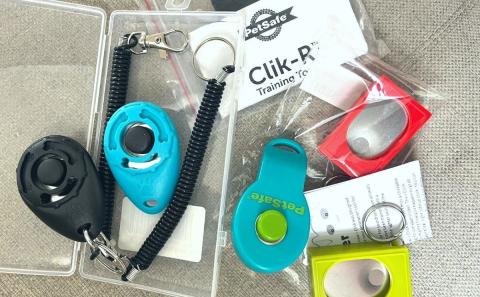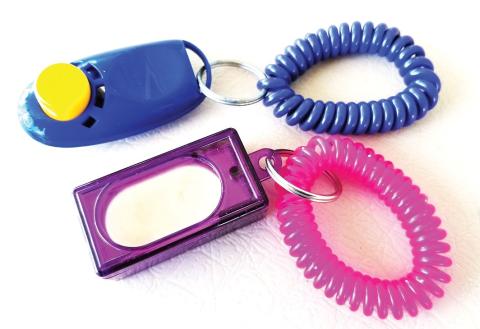
Published on October 1 by Ramona
Clicker training is a popular and highly effective method used in dog training based on the principles of positive reinforcement. It involves using a small handheld device, known as a clicker, that makes a distinct clicking sound when pressed. The clicker is used to mark desirable behavior, immediately followed by a reward such as a treat, praise, or playtime. Over time, dogs learn to associate the sound of the clicker with a positive outcome, making it easier to teach them new commands and behaviors. This article explores how clickers work, the science behind clicker training, and how to implement it effectively.
Clicker training is a type of operant conditioning, a learning process that uses rewards or consequences to shape behavior. The clicker acts as a marker that precisely indicates to the dog that they have performed the correct behavior and that a reward is coming.
The clicker itself is neutral—it has no meaning to the dog until it is paired with a reward. After repeated pairings, the dog begins to associate the sound with a positive outcome, just like the famous "Pavlov's dog" experiment where dogs learned to associate a bell with food. This process is known as classical conditioning.

The key principle behind clicker training is timing and consistency. The clicker allows you to mark the exact moment your dog performs a desired behavior. Here’s a breakdown of how it works:
The click sound is crucial because it is distinct, quick, and unlike everyday noises. This makes it easier for dogs to understand exactly what they’re being rewarded for. Unlike verbal praise, which can vary in tone and inflection, the clicker sound is consistent and immediate, making it a clear signal for the dog.
Clicker training is effective because of its precision and the clear communication it offers between the trainer and the dog. Here are a few reasons why clickers work so well:

Getting started with clicker training is straightforward. Here’s a simple step-by-step guide to help you begin:
Before using the clicker to teach specific behaviors, you need to create a positive association with the sound. This is called “charging” the clicker.
Once your dog understands that the click means a reward is coming, you can move on to teaching behaviors.
Once your dog associates the clicker with rewards, you can use it to teach basic commands, such as “sit,” “stay,” or “come.”
Once the behavior is consistent, you can start adding verbal commands like “sit” just before your dog performs the action.
As your dog gets better at following commands, you can introduce more complex behaviors or tricks, like shaking hands, rolling over, or fetching objects. The key is to break the behavior down into small steps and click for each successful part of the process.
For example, if you want to teach your dog to roll over, you can start by clicking when they lie down, then clicking when they turn slightly, and finally clicking when they complete the full roll.
Clicker training has a range of benefits for both dog and owner:

While clicker training is a powerful tool, there are some common mistakes that can undermine its effectiveness:
Clicker training is an excellent tool for both novice and experienced dog owners. It’s a positive, humane method that uses clear communication to help dogs learn faster and with less frustration. By marking the exact moment a desired behavior occurs and following it up with a reward, clicker training helps dogs understand what is expected of them in a fun and engaging way. Whether you’re training a puppy or an older dog, clickers can make the process smoother and more rewarding for both you and your furry friend.
Discover More Content





